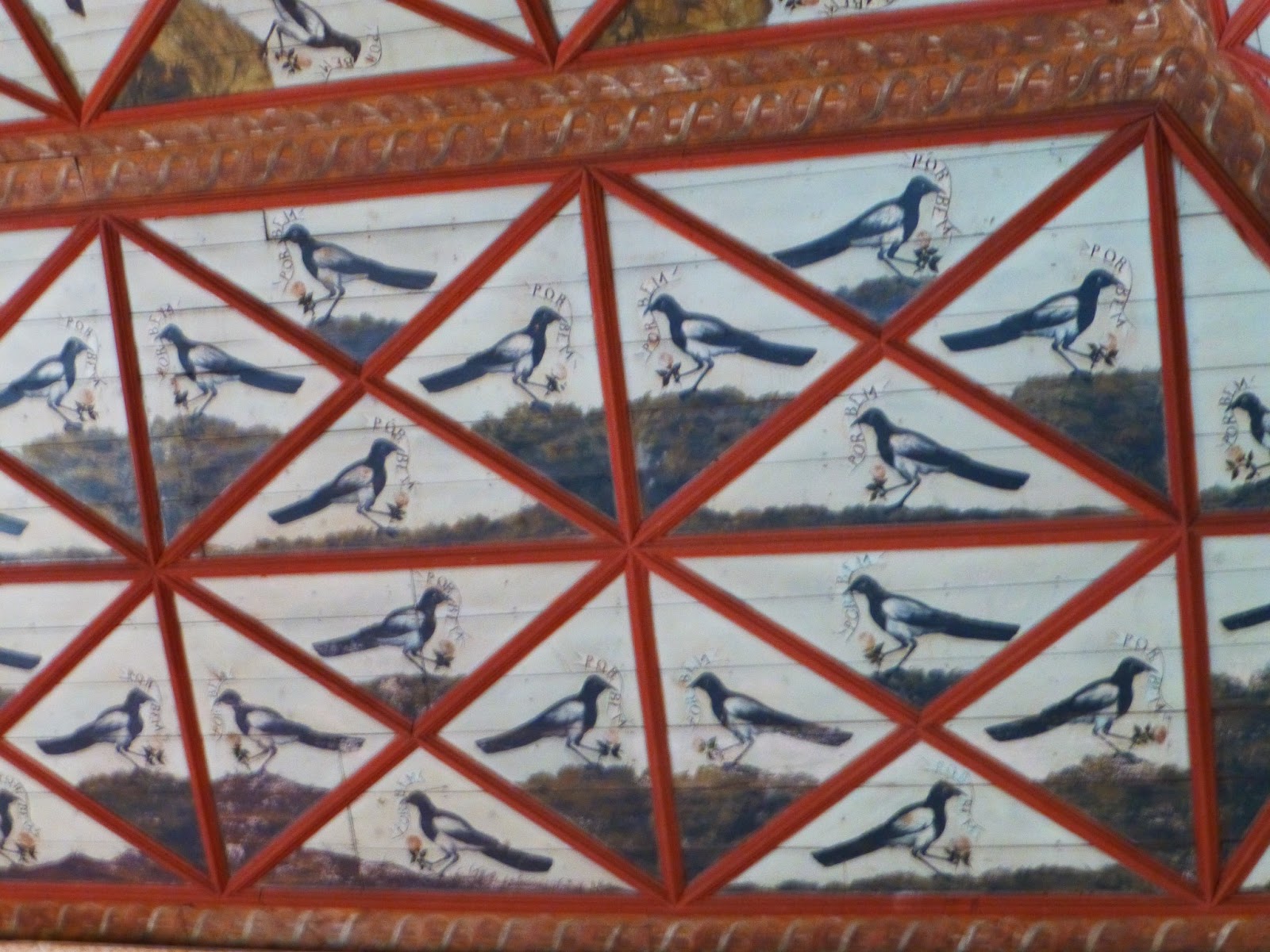I have neither the authority nor probably the actual knowledge to simplify, but here goes: Portugal was hugely important on the world stage in the1500s, and into the 1700s, due to its early navigational expertise and colonial desires, claiming assets all around the world, and it became incredibly wealthy through those pursuits. It liked that place of center stage and importance, but it fell behind in the 1800s when sea might (vs. exploration) became more important. During its rise and during its decline, lots and lots of money was spent on building monumental structures, some royal, some royal-related, some folly, because there was lots of money.
The town of Sintra was traditionally the summer resort of the Portuguese royalty. And as such it attracted the wealthy and courtly hangers on. It is classified UNESCO Heritage, and a compact city beautifully displaying Portuguese history, excesses, indulgent wealth.
 |
| The Moors established a fort overlooking the area in the 800s. Still standing, impressive. |
 |
| And one can walk all around. No rails, arduous climbing. Great fun. |
 |
| Looking across the fort's ramparts to the Pena National Palace on a hilltop . |
The Pena National Palace was built in the 1850s on the site of a monastery destroyed by the huge 1755 earthquake. It's a beautiful and weird conglomeration of styles including Moorish-Islamic, Romantic and what is a uniquely Portuguese style called Manueline, after King Manuel who had lots of money and loved eclectic, highly embellished design highlighting Portuguese importance (more below).
 |
| The Pena Palace. |
 |
| This is Manueline style. This particular window moulding is about 20X20 feet. |
 |
| In the palace the king's shower, ca. 1850. |
 |
| I don't know if you can see it, but each piece of this is decorated with intricate floral stuff, in great detail and depth. Can't imagine having to drink from its prickly surfaces, or having to keep it clean. |
 |
| A heavily carved traveling/folding royal chair. |
 |
| Golden centerpiece of a Portuguese caravel for the dining room table. |
And there's the Sintra National Palace, built in the 1500s and revised and occupied continually
through the 1900s by the Portuguese royalty.
 |
| From a distance. The two conical towers are kitchen chimneys, unique to this castle. |
 |
| Looking up and out one of those weird big chimneys. |
 |
| Most of the rooms have painted ceilings, mostly with paintings of birds; here swans, below a magpie sort of bird. |
 |
This type of cabinet is called a contador
(also the word for accountant). |
Estates were also built by the wealthy to be near the royal family when they were in Sintra. This estate, Quinta da Regaleira, was built in the early 1900s by a man made wealthy by the Brazilian wood trade. It included man made lakes, grottoes, streams, wells, tunnels, a greenhouse, extensive gardens, an aquarium, a subterranean initiation well (yep) - weird stuff. Built and decorated in the excessive Manueline style.

 |
| The Initiation Well (no further explanation), also called an inverted tower. |
And then finally there's this place, Manserrate Palace, built in the 1850s by Francis Cook, a Brit who was an amateur horticulturalist, botanist. He loved trees, and brought them in from all over the world.
 |
| The first lawn ever planted in Portugal. With its own watering system. |
 |
| Carved plaster hallway in the house runs the entire length of the first floor. Imagine it with statues and palms -- that's what the photos of the times showed. |
 |
| From the south, with the setting sun. |
 |
| An Asian fig tree he planted over a ruin he erected - just because. |
 |
Huge, beautiful Australian Bunyo pine.
All these properties are now owned and maintained by the state. Good tourist business.
|
We left Portugal yesterday, and are now in Seville, Spain. We've left the rain and cold behind; sunny, 80s, and a fantastically beautiful, vibrant city just getting ready to do its annual April Fair, a very big deal in these parts. But we're here with so many tourists! We'd been spoiled by having most places in Portugal to ourselves, and usually traveling places in the shoulder seasons, but we chose this and its interesting. It's nice seeing excitement, healthy tourism, a seemingly vibrant economy (although there's clearly a different story here to tell) and sunshine.

























No comments:
Post a Comment